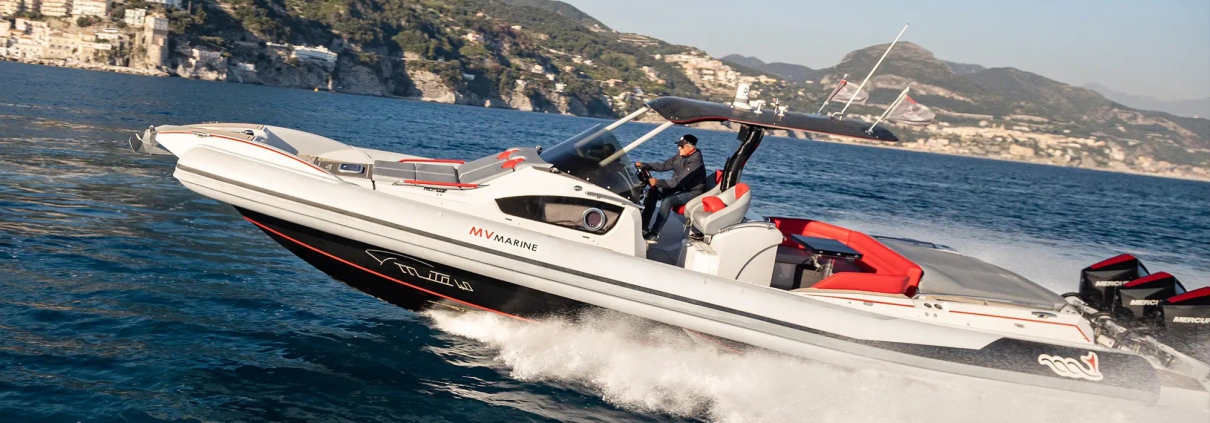Lithium Battery for Marine Use: How to Power Onboard Equipment the Right Way
- Introduction: Why Marine Electrical Systems Need a Different Kind of Battery
Running electrical systems at sea isn’t the same as running them on land. Marine environments introduce challenges that few other power systems face—constant motion, high humidity, salt exposure, and long operating hours without reliable shore power.
That’s why the question “what’s the best lithium battery for marine use?” isn’t just about energy density. It’s about maintaining reliable, consistent power for all your onboard systems—from navigation to communication to comfort equipment.
This guide explores how lithium technology meets the unique electrical demands of modern boats, and what you should consider before making the switch from traditional lead-acid or AGM batteries.
- What Makes a Battery “Marine-Grade”
A marine-grade battery is built to handle three key stress factors: vibration, moisture, and deep discharge cycles. It must provide reliable energy under constant motion and partial states of charge, something standard automotive batteries simply can’t do.
Historically, the market has relied on flooded or AGM deep-cycle batteries. These chemistries are durable but limited—particularly in power density and cycle life. By contrast, lithium batteries deliver lighter weight, higher usable capacity, and a stable voltage curve that keeps sensitive electronics operating smoothly.
For a comparison of traditional AGM systems, see this article:
➡️ AGM Marine Batteries: What Boaters Need to Know for Reliable Onboard Power
III. Understanding Onboard Power Demands: What Your Boat Really Needs from a Battery
To choose the right battery, it’s essential to understand what your onboard systems actually demand. Marine electrical loads generally fall into three categories:
- Critical Loads: Navigation lights, GPS, radar, VHF radios, and bilge pumps—these must stay operational even during heavy load or low voltage.
- Comfort Loads: Cabin lights, fans, USB outlets, and small appliances—these create continuous but moderate draw.
- Luxury Loads: Refrigeration units, air conditioners, and sound systems—high current and extended operation.
Each of these systems requires stable voltage and consistent discharge performance. Under heavy use, lead-acid and AGM batteries tend to experience voltage sag, which can disrupt electronics or trigger safety shutdowns. Lithium batteries, however, maintain near-constant voltage output across most of their discharge curve—keeping your onboard electronics powered safely and efficiently.
- How Lithium Batteries Excel in Marine Applications
Modern marine lithium batteries, particularly LiFePO₄ (Lithium Iron Phosphate) chemistry, address nearly every pain point of traditional systems:
- ⚡ High Energy Density and Lightweight Design – Reduce total boat weight while maximizing runtime.
- 🔋 Stable Voltage Curve – Keeps communication, navigation, and entertainment systems running flawlessly.
- ⚙️ Fast Charging – Recharge quickly from alternators, shore chargers, or solar panels, minimizing downtime.
- 🔁 Deep-Cycle Durability – Over 3,000 full cycles with minimal capacity loss.
- 🌡️ Thermal and Safety Management – Built-in BMS prevents overcharging, overheating, or over-discharging.
- 🌊 Marine-Grade Protection – IP67-rated casings resist salt corrosion and moisture intrusion.
These advantages make lithium batteries especially effective for powering house loads and auxiliary systems, rather than just starting the engine.
- Choosing the Right Lithium Battery for Marine Use
When selecting a lithium battery, the first step is to clarify its purpose:
- Starting Battery: Delivers high bursts of current for a few seconds.
- House Battery: Provides stable, long-duration energy for onboard devices and systems.
For most marine operators, the house battery is where lithium shines. Key factors to consider include:
- Capacity and Voltage: Match amp-hour (Ah) rating and nominal voltage (12.8V, 24V, or 48V) to your power budget.
- C-Rate Compatibility: Ensure the battery can safely handle both peak and continuous loads.
- Protection Standards: Look for waterproof and anti-corrosion features suitable for marine use.
- BMS Communication: For fleet and commercial vessels, remote monitoring via CAN or RS485 ensures safer management.
For marine professionals and fleet operators seeking durable lithium options, explore our marine lithium battery series—designed specifically for long-cycle reliability and resistance to harsh sea environments.
- Practical Considerations for Marine Lithium Integration
Upgrading to lithium is not just a drop-in swap—it’s a system integration process. A few key considerations include:
- Charging Compatibility: Confirm your alternator or charger supports lithium charging profiles (14.4–14.6V absorption range).
- Battery Management: Properly integrate BMS with existing monitoring systems for voltage and temperature data.
- Parallel/Series Configurations: For extended range or backup, modular systems allow multiple packs in parallel.
- Safety & Compliance: Ensure compliance with ABYC, UL1973, and CE standards for marine installations.
For an in-depth look at deep-cycle power performance, check out:
➡️ Deep Cycle Marine Battery: What You Need to Know for Reliable Onboard Power
VII. Conclusion
The phrase “lithium battery for marine use” no longer refers to an experimental technology—it’s now the standard for reliable onboard power. Whether you’re managing a leisure yacht or a commercial vessel, the right lithium setup ensures stable voltage, faster charging, and longer service life under the toughest marine conditions.
Remember, a marine battery isn’t just about starting the engine—it’s about keeping your entire onboard ecosystem alive. Choose a system built for continuous, dependable power delivery, and your time on the water will be safer, quieter, and more efficient.


